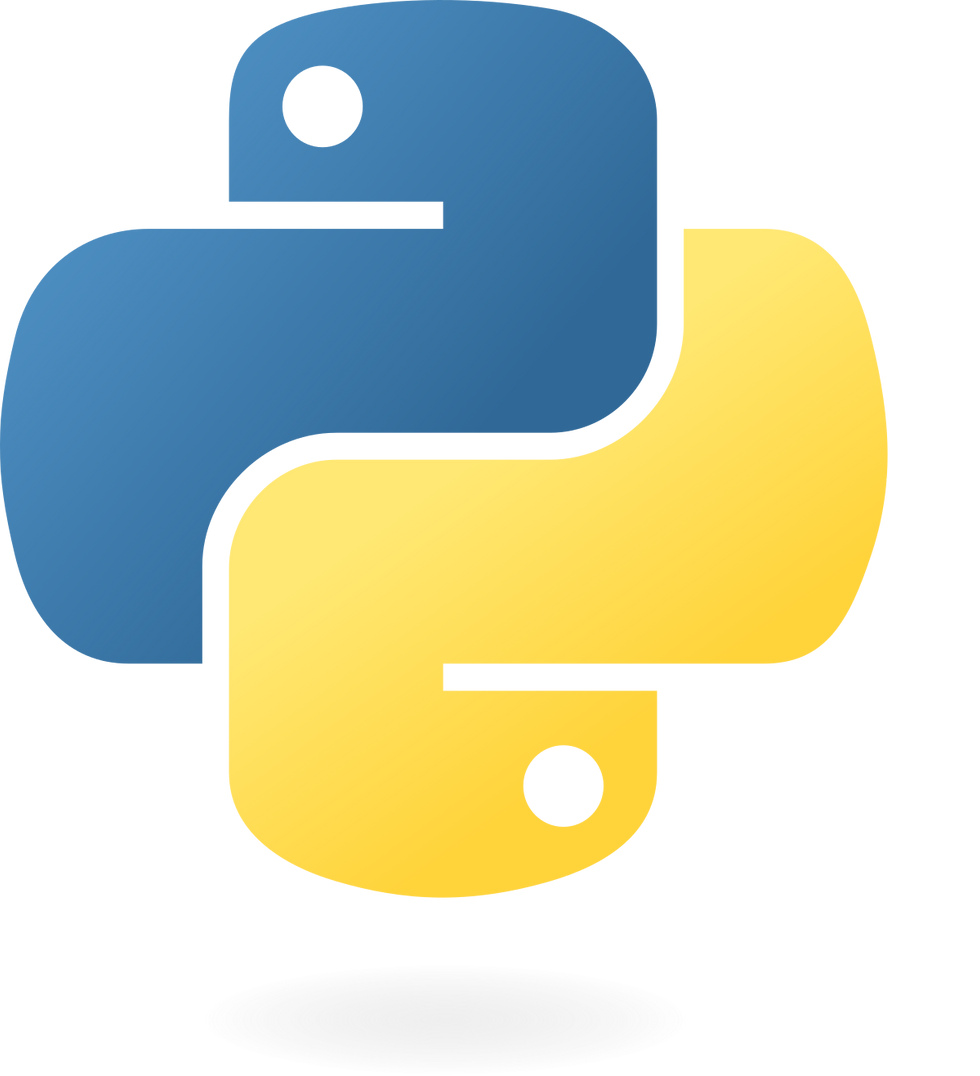Innovation with Process
- Rick Pollick

- Oct 23, 2024
- 11 min read
Updated: Oct 24, 2024

Balancing Innovation with Process: Why Both Matter
Innovation. It’s a word that makes everyone sit up a little straighter in their chairs. We know innovation is critical to staying competitive—whether you’re developing new healthcare technologies, launching cutting-edge retail solutions, or leading breakthroughs in scientific research. But innovation, as exciting as it is, doesn’t just happen in a vacuum. It needs the right environment to thrive.
This is where process comes in. But let’s be real—when we think of "process," it doesn’t spark the same level of excitement. Too often, it’s seen as a series of rules that slows things down, holding back the innovative ideas we’re so eager to explore.
Note: This blog post has a lot of content about Steve Jobs in it. But, it is not a Steve Jobs fan-post. This post unpacks some of the ideas and comments he shared regarding innovation - and correlates them to effective process design.
I’ve seen this balancing act firsthand across industries. Teams are eager to innovate but hit roadblocks because their processes aren’t built to support experimentation. On the flip side, I’ve also seen teams that are so focused on building airtight processes that they inadvertently kill creativity. So, the big question is: How do we strike the right balance between innovation and process to stay relevant long-term?
Let’s unpack this delicate balance, dive into some real-world examples, and get into the nitty-gritty of why both innovation and process matter if you want to build something truly game-changing. We'll also take inspiration from a Steve Jobs quote that nails this concept:
“Some people say, ‘Give the customers what they want.’ But that's not my approach. Our job is to figure out what they're going to want before they do.”
The Myth of the Process-Driven Slog
There’s a common misconception that innovation is inherently chaotic and that process, by its very nature, is a creativity killer. But here’s the truth: without process, innovation risks becoming aimless. Sure, you might come up with a few brilliant ideas, but scaling those ideas or turning them into sustainable business practices becomes nearly impossible without some structure in place.
Think about healthcare, for example. Healthcare innovation has led to transformative technologies, from telemedicine platforms to AI-driven diagnostic tools. But these advancements only became successful because they were grounded in repeatable, scalable processes that allowed them to be implemented across complex systems. A groundbreaking idea is just the starting point; it’s the process that ensures it reaches the patients who need it.
On the other side, poor processes can easily stifle innovation if they become too rigid or bureaucratic. When teams have to jump through too many hoops just to try something new, that momentum dies quickly. A process that works for a stable environment might be the very thing that prevents a company from adapting to change.
A 2020 study published in Harvard Business Review emphasized this, showing that companies with overly rigid processes in place often struggle to innovate because employees become more focused on compliance than creativity. The report highlighted that successful organizations are those that can adapt processes to support new, creative ideas rather than constraining them.
How Smart Processes Empower Innovation
The real trick is not to choose between process or innovation but to build smart processes that enable innovation. These processes don’t create roadblocks; they act as a supportive framework that ensures ideas can be tested, iterated upon, and scaled. Let’s explore some strategies for creating that sweet spot between innovation and process:
Understand the Purpose of Each Process
Every process you implement should have a clear goal. If a process doesn’t directly support innovation, it might need to be revisited or even scrapped. For example, in agile product development, the purpose of the sprint process isn’t to limit flexibility—it’s to create a rhythm for continuous iteration and improvement. Ask yourself: Is this process adding value, or is it just adding more steps? If it’s the latter, it’s time to rethink it.
Make Room for Controlled Experimentation
Innovation doesn’t have to mean throwing out the rulebook. Instead, build processes that allow teams to experiment within safe boundaries. Google’s famous “20% time” is a prime example of this. Engineers at Google are given one day a week to work on their chosen side projects. This freedom has led to some of the company's most innovative products, like Gmail and Google Maps. While this type of experimentation is controlled (teams still have deliverables for their core projects), it gives employees the flexibility to innovate without fear of failure.
Create Feedback Loops
Good processes should include built-in feedback loops. This means gathering data and insights at regular intervals to understand how both the innovation and the process are performing. For example, many companies use agile methodologies like Scrum or Kanban, which include frequent retrospectives—meetings designed to assess what’s working and what’s not. These feedback loops allow teams to quickly adapt and improve, ensuring that both the process and the innovation are continuously evolving.
Empower Teams with Autonomy
One of the biggest innovation killers is centralized decision-making. If every new idea has to be approved by five different layers of management, creativity is going to get crushed. Empower your teams to make decisions at the ground level. In Spotify’s model of agile management, for instance, small, autonomous teams are given the freedom to develop, test, and implement new ideas that impact a shared vision (or set of goals). This decentralized structure gives Spotify the ability to experiment rapidly, which is why they’ve been able to stay at the forefront of the music streaming industry. (Read more about Spoitfy’s SDLC model: https://www.atlassian.com/agile/agile-at-scale/spotify)
Iterate on Your Processes
Just like products, processes need to evolve. The framework that worked when you had a small startup team of five probably won’t cut it when your company scales to 500 employees. Processes should be viewed as living, breathing entities that evolve with the needs of your team and business. It’s all about maintaining the flexibility to innovate while ensuring that the underlying structure keeps things moving forward.
The Steve Jobs Approach: Innovate by Anticipating
Now, let’s circle back to that Steve Jobs quote:
“Some people say, ‘Give the customers what they want.’ But that's not my approach. Our job is to figure out what they're going to want before they do.”
This philosophy gets to the heart of why balancing innovation with process is so important. To anticipate what customers will want in the future, you need an environment where bold ideas can be nurtured. But you also need the structure to ensure that those ideas don’t just remain in the realm of possibility—they have to be executed effectively and at scale.
Apple mastered this balance. They didn’t just innovate by following trends—they anticipated needs before customers even knew they had them. The iPhone is a perfect example. Apple didn’t wait for consumers to demand a device that combined music, the internet, and a phone; they built it before anyone realized they wanted it. But Apple’s success wasn’t just the result of visionary ideas—it was also due to their meticulous processes that allowed for seamless execution, manufacturing, and global distribution.
Long-Term Relevance Requires Both Innovation and Process
At the end of the day, the businesses and teams that stay relevant over the long haul are those that master the art of balancing innovation with process. Without innovation, you risk becoming obsolete. Without process, your innovations won’t scale or deliver consistent value. Both are essential, and both need to be continuously fine-tuned.
Take companies like Tesla, for example. Their groundbreaking innovations in electric vehicles wouldn’t have been possible without processes that support experimentation and rapid iteration, but also ensure the cars meet safety standards, regulatory requirements, and customer expectations. Tesla's ability to iterate quickly on hardware and software while maintaining a structured manufacturing process is one of the reasons they’ve been able to lead the market in electric vehicles.
In a McKinsey & Company report, it was found that companies that manage to align their processes with innovation outperform their competitors by up to 20%. The report emphasized that processes should act as a framework for exploration, not a straitjacket that limits creativity.
Unpacking Steve Jobs' Approach to Innovation: "By the Time You Get It
Built, They Will Want Something New"
In this quote, Steve Jobs touches on a fundamental challenge of innovation: the gap between what customers think they want and what they actually need—especially in the future. Jobs believed that simply asking customers what they want and building exactly that is often a losing strategy. By the time the product is developed, tested, and launched, market needs and customer expectations may have already shifted.
This forward-thinking philosophy is at the core of Apple’s success. Instead of relying solely on customer feedback, Jobs pushed his teams to anticipate future needs. Apple’s ability to create iconic products like the iPhone and iPad wasn’t because the company followed customer trends—it was because they anticipated future desires and built products that people didn’t even know they needed yet.
Jobs’ quote highlights an important truth in product development: staying ahead of customer expectations is key to long-term success. The question is, how can businesses today adopt this approach without falling behind in an increasingly competitive and fast-paced market?
One answer lies in adopting agile methodologies, which offer a solution to the very problem Jobs identifies: the lag time between idea and execution. Agile practices help shorten this time, allowing businesses to stay closer to the evolving needs of their customers while continuing to innovate at pace.
How Agile Methodologies Help Address This Challenge
The heart of Steve Jobs’ message can be aligned with the principles of agile methodologies, which prioritize adaptability, quick iteration, and continuous improvement. Let’s dive into how agile methods can directly solve the challenge raised by Jobs' quote:
1. Short Feedback Loops to Capture Evolving Customer Needs
In traditional product development, there is often a long gap between ideation and the final product release. This gap is where teams lose touch with the dynamic changes in customer expectations, resulting in a product that’s already outdated by the time it hits the market.
Agile frameworks, such as Scrum, emphasize short development cycles (or "sprints"), which allow teams to release smaller pieces of functionality continuously. This frequent release cycle enables the team to gather real-time feedback from customers and stakeholders. With each iteration, adjustments are made based on customer feedback, reducing the risk of releasing a product that no longer meets their needs.
By focusing on quick, iterative cycles, teams can respond to shifts in the market, ensuring that what they build remains relevant and valuable to customers—even if the market or customer preferences change during the development process.
2. Prioritization Based on Value
Jobs' approach was to look beyond what customers say they want today and instead focus on anticipating what will bring them value tomorrow. Agile practices like backlog grooming and value-based prioritization make this possible.
In agile teams, the product backlog is a dynamic, living document that is continuously updated to reflect the most pressing customer needs and opportunities. Teams regularly revisit and reorder tasks in the backlog based on business value and customer feedback, ensuring that they are always working on the most impactful features.
By constantly revising priorities based on what brings the most value to customers, agile teams avoid building features that customers won’t care about by the time they are released. This approach mirrors Jobs’ philosophy of thinking ahead and building what will matter to users in the future.
3. Embrace Change, Don’t Fear It
A core principle of agile is that change is not just expected—it’s welcomed. Traditional waterfall approaches to project management are built on the idea that requirements are locked in at the beginning of a project, and changes can cause delays and complications. Agile flips that on its head, operating on the assumption that requirements will evolve as the project progresses.
In today’s fast-paced environment, customer needs are constantly shifting. An agile approach makes it easier to adapt to these changes as they arise, preventing the scenario Jobs warned about delivering a product that no longer aligns with customer needs by the time it’s built.
When teams work in short sprints and are open to changing course, they are more likely to stay aligned with what customers will want tomorrow, rather than delivering what they think they want today.
4. Innovation Through Continuous Improvement
Jobs believed in pushing beyond customer expectations and introducing something innovative that they hadn't yet considered. Agile practices also encourage teams to strive for continuous improvement. Every sprint ends with a retrospective—a meeting where the team reflects on what went well and what can be improved in future cycles.
This continuous improvement mindset enables teams to be innovative, as they are always looking for ways to enhance their processes and deliver better results. Agile teams are encouraged to experiment with new ideas and approaches within the structure of their sprints, which fosters an environment where creative solutions can emerge.
Instead of sticking rigidly to a pre-defined plan, agile teams have the freedom to evolve their methods and tools based on what they learn, making them more likely to discover breakthrough innovations—just as Jobs emphasized in his approach to product design.
5. Anticipating Customer Needs Through Prototyping and MVPs
Another agile practice that ties directly into Jobs’ vision is the focus on building Minimum Viable Products (MVPs). An MVP is the simplest version of a product that can be built and tested with users to validate an idea. Instead of developing a full-featured product that may take months or years to launch, agile teams create prototypes and MVPs to test ideas quickly.
This approach allows teams to test their assumptions and gather insights from real users without committing to lengthy development cycles. By getting feedback early and often, teams can anticipate customer needs more effectively and refine the product before fully committing to a large-scale release. This practice aligns perfectly with Jobs' idea of figuring out what customers will want in the future rather than relying on what they say they want today.
6. Truly Cross-Functional Teams Foster Creativity and Collaboration
In agile methodologies, cross-functional teams work together to deliver product increments during each sprint. These teams are composed of individuals from different disciplines—design, development, testing, and product management—who collaborate closely throughout the product lifecycle.
This collaborative environment mirrors Jobs' philosophy at Apple, where cross-disciplinary collaboration was key to delivering innovative products that combined technical excellence with beautiful design and seamless user experiences. By breaking down silos and fostering collaboration, agile teams are better positioned to come up with creative solutions and anticipate future customer needs.
Using an Agile Mentality to Build What Customers Will Want
Steve Jobs’ quote emphasizes a critical lesson: simply giving customers what they say they want isn’t enough. To stay ahead of the competition, companies must anticipate future needs and build products that people don’t even know they want yet. This forward-thinking mindset is a hallmark of successful innovation.
Agile methodologies provide the perfect framework to put this philosophy into action. By fostering rapid iteration, continuous feedback, and a willingness to adapt, agile teams can stay one step ahead of customer expectations, delivering value not just for today, but for tomorrow.
As businesses continue to navigate rapidly changing markets, adopting an agile approach can be the difference between releasing a product that’s already outdated and delivering something that truly revolutionizes the customer experience—just as Steve Jobs did time and again at Apple.
Final Thoughts: The Journey to Continuous Improvement
The journey to balancing innovation with process is an ongoing one. There’s no perfect formula, and what works today might not work tomorrow. But by building smart processes that empower innovation rather than stifle it, teams can ensure that they stay relevant in a rapidly changing world.
So, the next time you’re faced with a decision to prioritize innovation or process, remember—you don’t have to choose one over the other. By finding the balance, you can set your team up for long-term success, driving consistent, impactful results that keep your organization ahead of the curve.
Considerations—what strategies have you found successful in balancing innovation with process? How do you anticipate customer needs before they even arise?
References
Harvard Business Review - The Effect of Rigid Processes on Innovation: The study discusses the negative impact of overly rigid processes on innovation, highlighting how companies that focus too much on compliance tend to stifle creativity.URL: https://hbr.org/2020/05/when-your-innovation-process-stifles-innovation
McKinsey & Company - Aligning Processes with Innovation for Competitive Advantage: This report shows how companies that successfully align their processes with innovation outperform competitors by up to 20%, emphasizing the importance of flexibility in process design to support creativity.URL: https://www.mckinsey.com/business-functions/strategy-and-corporate-finance/our-insights/the-eight-essentials-of-innovation














